Blowing bubbles
Interview with
Dave Ansell and Adam Murphy have fun making bubbles in this kitchen science experiment... and there's a bit of science involved too!
Dave - You want some bubble mixture. If you've got some in a pot which is made commercially, that will work fine. You can also just use washing up liquid and water. It will work better, if you live in a hard water area like most of East Anglia where we are here, either if you use de-ionised water like you'd put into a battery for a car or even just using some natural spring water from somewhere in Scotland with nice soft water. And adding a little glycerin as well will make the bubbles last longer. You also want something to make bubble formers with, so maybe some wire or some pipe cleaners. If you're using wire, you also want some string to wrap around it. Basically you're making your own pipe cleaners.
Adam - I didn't have any commercial bubble mixture so I've gotten a little bit of water and I put in quite a lot of washing up liquid into that. And in terms of former, I've just got a coat hanger that I folded into a few loops
Dave - That'll work! For complicated reasons, I have a gallon of bubble mixture which was in my shed, so I'm going to use that. And I've got some wire with some string wrapped around it to make formers. I'm gonna pour my bubble mixture into a jug, which is making it really nice and bubbly and now we can make some bubbles.
Adam - Yeah, this one is just fun. I've been standing here blowing bubbles.
Dave - Oh, that's a pretty nice bubble!
Adam - So I've got kind of a little loop here and I found that it's not good at blowing big bubbles, but what it will do is blow a load of smaller ones, which is fun.
Dave - I've got a pear shaped loop of wire string wrapped around it. The string basically just holds the bubble mixture and stops the film growing out. And it's about 6 centimeters long and three centimeters wide. If I blow up with it, they're coming out at maybe seven or eight centimeters across. I was impressed. It turns out that this double mixture is pretty good.... That one was almost about 15 centimeters!
Katie - Okay. Okay. Stop showing off. Where's the science in all of this?
Dave - Something to notice is that although the loop which you're blowing with probably isn't a circle, all the bubbles very quickly turn into a ball shape, a sphere. So this film, although it reduces the surface tension of water. (Surface tension is basically - the surface of water, doesn't like being a surface. It tries to get as small as possible. So although the detergent reduces this surface tension, it doesn't take it away entirely. And you can show this if you happen to make a former and you get an extra piece of string down the middle, and you pull it out so there's a film on both sides of the piece of string. If you pop the bubble on one side of the string, the string is pulled across in the other direction because the film is trying to shrink and get as small as it possibly can. And the shape for a certain volume, which has the smallest possible surface area, is a sphere. So bubbles always try and form spheres unless you get more than one bubble touching, when you can get other interesting effects.
Adam - And it is also fun as well. So Dave, if the bubbles are more stable and they pull themselves into spheres, why do they just pop in the air after a while?
Dave - Yeah. As soon as there's a hole in the bubble, it will pop because it's trying to shrink as quickly as possible. I mean, just like a balloon and any hole we'll make it pop. Now there's various ways of making holes. The traditional one is that you poke it with your finger and it goes pop, or it hits the floor and that makes it break, and the rest of the bubble collapses. But in ideal conditions, the two things that should cause it to fail, one is the water. It slowly evaporates and you eventually end up with no water in some part of the film, and then it will go pop. The other effect is that there is a little gap between the two layers of detergent in the film and the water will tend to flow down this gap. In fact, if you get a fresh film hold it up to the light, you can kind of see the little runnels of liquid flowing down through it, as the water drains out of the film. And in a bubble, eventually all the water would drain from the top. You'll end up with no liquid at the top. At which point you'll get a hole, at which point it pops. And this is why you add things like glycerin to bubble mixture, which will make the water more viscous and slow down the rate at which it's slowing down through the film. And so the bubble will last longer.
They actually add it (glycerin) to washing up liquid to make the foams last longer. Apparently they do the same thing with European clothes washing powder, but not with American clothes washing powder. Everyone in Europe has washing machines which you can see into the inside of. So you want to be able to see the bubbles. If it's not making bubbles and everyone thinks their washing powder isn't working, but it doesn't actually help clean clothes, having bubbles. Detergent does, but bubbles don't. And in the States, no one has washing machines which you can see inside of. So no one expects to see bubbles. So they don't make any.
Adam - If you're stuck inside as well, this is a fun way to entertain all the kids. I mean, I'm a 31 year old kid and it's entertaining me.
- Previous Dissolving an egg shell
- Next Shampoo chemistry

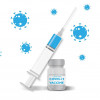

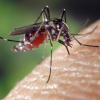
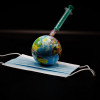

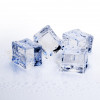
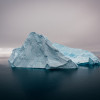
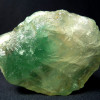
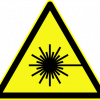
Comments
Add a comment